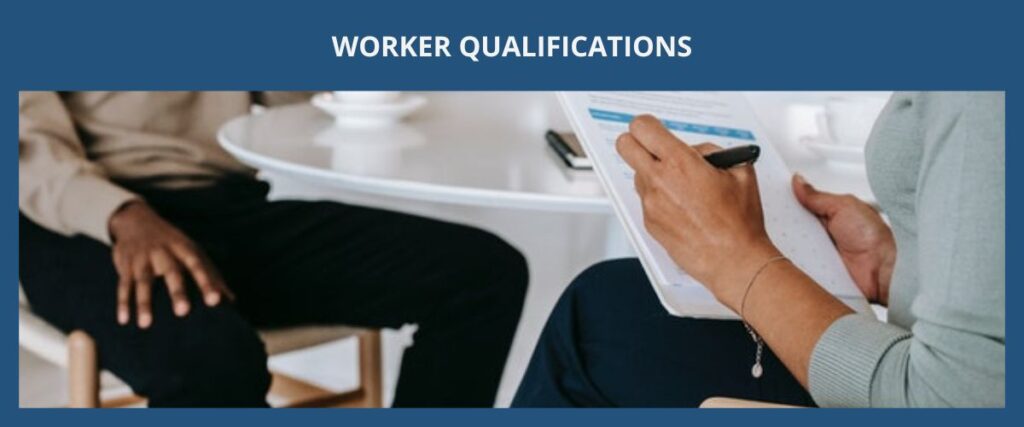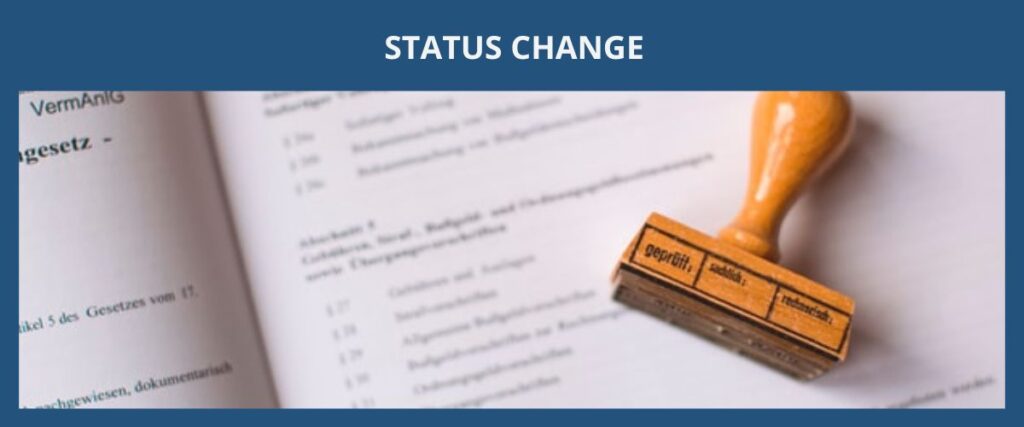The E2 visa is a nonimmigrant (temporary) visa for employees of foreign business investors (from certain treaty countries) who are coming to the United States to manage the U.S. business that they have invested in or is actively in the process of investing a substantial amount of money in.
The employee under the E2 visa can work as an executive, supervisor, or a person with special skills that are essential in successfully running the operations of the U.S. business efficiently. The nationality or citizenship of the E2 visa employee must be from the same treaty country as the principal E2 visa business investor (treaty investor). Employees can be new hires under the E2 visa which means that they do not need to have worked for the business investor in the past.
- 1.
- 2.
- 3.
- 4.
- 5.
- a.
- b.
- 6.
- 7.
- 8.
- 9.
- a.
- b.
- c.
Table of Contents
The principal treaty investor that is the employer and the employee of the treaty investor both must satisfy the requirements under the E2 visa. The employer can be a person or an entity under the E2 visa.
E2 Visa Qualified Employee of Treaty Investor
A qualified employee of the treaty investor under the E2 visa must (1) be an executive or supervisor OR have special qualifications that make them essential to efficiently or successfully operate the business in the United States, and (2) have the same nationality (treaty country) as the principal E2 visa employer (treaty investor).
E2 Visa Qualified Employer (Treaty Investor)
A qualified E2 visa employer (treaty investor) must satisfy 1 of the 4 following scenarios:
- (1)
- A person with a valid E2 visa status if the person is already in the United States
- (2)
- A person who can be qualifiable for an E2 visa status if the person is overseas (outside the United States)
- (3)
- An organization or enterprise that is at least 50% owned by persons who have a valid E2 visa status and nationality of a treaty country
- (4)
- An organization or enterprise that is at least 50% owned by persons who can be qualifiable for an E2 visa status if they are overseas (outside the United States)
The original statutory wording for qualified persons for E2 visas (Treaty Investor Employee) can be found in 8 CFR 214.2(e)(3).
eng-1024x427.jpg)
The E2 visa status can be granted an initial period of stay up to 2 years (the E2 visa itself may be granted up to 5 years depending on the reciprocal country) and the renewal (extensions of stay) can be granted for up to an additional 2 years each time. There is no maximum limit on how many times the E2 visa can be renewed and an automatic two-year period of readmission is generally granted when the E2 visa holder returns to the United States after traveling overseas. The automatic 2-year renewals do not apply to the family members of the E2 visa holder unless they were returning to the United States with the principal E2 visa holder (i.e., the employee of the E2 visa treaty investor).
*The period of stay that can be granted for the E2 visa varies among different treaty countries. For example, Canadians can be granted a period of stay for up to 2 years whereas Mexicans can be granted a period of stay for up to 1 year.
E2 visa Grace Period
The E2 visa employee is allowed to enter the United States 10 days before the start date and stay an additional 10 days after the end date. However, the E2 visa employee cannot work in those additional 20 days. There is also a 60-day grace period of authorized stay in the United States if the employee’s E2 visa is terminated earlier than their visa status end date. Working is also not allowed during the 60-day grace period since its purpose is for the person to look for other employment or wrap up their affairs in the United States.
-eng-1024x427.jpg)
The E2 visa for the employees of a treaty investor has three main requirements that need to be satisfied: evidence must be provided to the USCIS or DOS to show that (1) the employee must have the nationality or citizenship of a country that has a qualified treaty with the United States (or the foreign country is approved under U.S. legislation) which should also be the same treaty country as the E2 visa employer (treaty investor), (2) the employee must be an executive or supervisor OR have special qualifications that make them essential to successfully operating the business efficiently in the United States, and (3) their employer (treaty investor) must qualify under the principal E2 visa.
Documents Required for the E2 Visa (Employee of Treaty Investor)
The evidence provided to the USCIS or DOS for the E2 visa (Employee of Treaty Investor) must show:
The original statutory wording for the evidentiary requirements of the E2 visas (Treaty Investor Employee) can be found in 8 CFR 214.2(e).

The total time an E2 visa takes is consisted of the processing time for the (1) U.S. business registration with the U.S. consulate or embassy (if first E2 visa), (2) E2 visa application (Form I-129) with USCIS or E2 visa application (Form DS-156E) with the U.S. consulate or embassy and/or the (3) visa application (DS-160) at a U.S. consulate or embassy overseas if the person is not already in the United States or is ineligible to do a change of status within the United States. In most cases, it is preferable to file the E2 visa application with the U.S. consulate or embassy and not with the USCIS.
A rough estimate for the Form I-129 petition for the E2 visa of the treaty investor’s employee is around 4 to 6 months. Factors that influence the E2 visa application processing time usually include but are not limited to if there was any Request for Evidence (“RFE”) issued, and the caseload of the USCIS service center and the U.S. consulate or embassy.
Premium Processing for Form I-129 (Expedited Service)
A rough estimate for the Form I-129 petition for the E2 visa of the treaty investor’s employee is around 4 to 6 months. However, a 15-day premium processing (Form I-907) is available for the Form I-129 part of the E2 visa petition. Premium processing is an optional expedited service where the USCIS guarantees that the case will be processed within 15 calendar days (not business days). When a notice of intent to deny (NOID) or a request for evidence (RFE) is issued, a new 15 calendar days will start when the USCIS receives a response from the applicant. If the USCIS fails to process within the time frame, a refund of the service fee will be given and the case will continue to be expedited. Please note that USCIS’s guaranteed response may be an approval notice, denial notice, notice of intent to deny (NOID), request for evidence (RFE), or open an investigation for fraud or misrepresentation.
The current premium processing fee for the E2 visa is $2500 USD and it can be requested when the original petition is submitted to the USCIS or an upgrade to premium processing can be done when the case is pending.

After the USCIS or U.S. consulate or embassy approves the E2 visa petition (Form I-129/DS-156E), the person will then need to change into their E2 visa status. There are 2 ways to change into the E2 visa status: change of status (done in the United States) and physically entering the United States after consular processing (done outside of the United States).
Change of Status & Consular Processing
Change of status is usually for a person who is already in the United States with another valid nonimmigrant visa status and has maintained a lawful visa status throughout their time in the United States. On the other hand, consular processing is for a person who lives outside the United States or for a person who is ineligible to change their status in the United States due to noncompliance of U.S. immigration law (e.g., overstayed on their previous visa status, worked when they did not have valid U.S. work authorization, the visa status they used to enter the United States does not allow them to change into another type of visa status, etc.)
For a person who is residing overseas (outside the United States) or a person who is ineligible for change of status with the E2 visa petition (Form I-129), consular processing must be done to obtain the E2 visa status. Consular processing involves the person attending an in-person interview at the U.S. consulate or embassy usually in the person’s home country. In certain circumstances, a person can do consular processing in another country as a “Third Country National.”
After the interview approval at the U.S. consulate or embassy, the person would have to be admitted entry into the United States by the CBP officer at the border (usually at the airport) which means that the person would have to physically enter the United States as the final step for the E2 visa status to be activated.
For a person who is already in the United States with another valid nonimmigrant visa, there are usually two options available to obtain the E2 visa status:
(1) Change of Status: this is the more commonly chosen option where the person states that they would like to change their status without leaving the United States in their E2 visa petition (Form I-129). If the person is eligible (no violations of U.S. immigration laws), then their nonimmigrant visa status will be changed upon the approved employment start date listed in the E2 visa petition. In cases where the person’s change of status request is denied or the person needs to change it into consular processing, an application for action on an approved application or petition (Form I-824) may be required.
(2) Consular Processing: this must be chosen if a person cannot show that they have maintained lawful visa status in the United States or for any other reasons such as the person needs to travel internationally before the E2 visa petition is approved.

The E2 visa treaty investor’s employees can only work the activities that were approved in the original E2 visa application with one exception where the E2 visa employee is allowed to work for the parent company or a subsidiary if:
- The relationship between the organizations is qualified
- The employment in the subsidiary requires supervisory, executive, or essential skills
- There have been no changes in the terms and conditions of the employment
A new or amended E2 visa petition must be filed when there is a substantial change in the terms and conditions of the E2 visa status. A substantial change under the E2 visa is when a fundamental change happens such as a merger, acquisition, or sale of division where an E2 employee is employed. The E2 visa employee must wait until the amended or new E2 visa petition is approved to work.
Dependent family members (spouse and unmarried children under 21 years old) of E2 visa workers are allowed to stay in the United States under the E2 visa status and do not need to have the same nationalities as the principal E2 visa worker. The E2 spouse (not the E2 child) can legally work in the United States with an employment authorization document (EAD, Form I-765).
Dual intent visas allow the foreign person to have both an intent to temporarily stay in the United States and an intent to permanently stay in the United States. The intention to permanently stay in the United States can be shown when the foreign person has a pending green card petition with the USCIS or an approved PERM labor certification from the U.S. Department of Labor.
The E2 visas are limited dual intent visas which means that the timing of any green card application or petition must be carefully strategized. Having dual intention (which is possessing an immigrant intent and a nonimmigrant intent at the same time) is very tricky for E2 visa holders because the U.S. Department of State (i.e., U.S. consulate or embassies) does not recognize it as a dual intent visa but the U.S. Citizenship and Immigration Service (“USCIS”) in practice does treat it as a dual intent visa limited with certain restrictions.
Due to the situation described above (i.e., the different beliefs that the U.S. consulate or embassy and the USCIS hold on the dual intent of the E2 visa), showing an immigrant intent can cause issues with the E2 visa holder’s eligibility to renew (extend) their visa or apply for other nonimmigrant (temporary) visas to travel to the United States. For example, an E2 visa renewal (extension) will likely be denied if an E2 visa holder who has a pending green card petition (which shows immigrant intent) applies for it at the U.S. consulate or embassy (i.e., part of the Department of State), whereas it will likely be approved if it was applied for with the USCIS.
Another issue that may arise when the E2 visa holder shows an immigrant intent is when they return to the United States after traveling internationally. For example, an E2 visa holder who has a pending green card application may be denied admission into the United States by the CBP officers at the border (e.g., airport) because the CBP is a part of the U.S. Department of State that believes the E2 visa is not a dual intent visa (i.e., cannot have an immigrant intent) and that having a pending green card application shows that the person has an intention of staying in the United States permanently. So, unlike visas (e.g., H1 visa, L1 visa) that allow dual intention, E2 visa holders should be more cautious when deciding whether they must travel internationally after they file for a green card (immigrant visa) petition.
The E2 visa allows foreign investors from certain treaty countries to send their employees (i.e., executives, managers, or staff who has specialized skills that make them essential in successfully running the U.S. business) who are from the same treaty country to the United States to help manage their U.S. business investments.

For people who do not qualify for the E2 work visa petition, the closest alternatives would be filing for an L1A visa or an L1B visa petition which is for employees who are either a manager or executive or a person who has specialized knowledge of a multinational company, or an E1 visa which is for employees of treaty traders who has a U.S. business involved in international trade, or an H1b visa petition (Australians can file for E-3 visa petitions), or a TN visa petition (for Canadian or Mexicans) to work in the United States.
Another possible alternative to filing an E2 visa petition for an employee of a treaty investor would be to file for a green card petition which is a permanent immigrant visa and not a temporary work visa like the E2 visa. Typically, an employee who is qualifiable for an E2 visa would file for an EB1c green card (for executives or managers of multinational companies), an EB2 green card (for persons who have at least a master’s degree or a bachelor’s degree and 5 years of post-college progressive work experience), or an EB3 green card (for persons who has at least a bachelor’s degree). For more on green cards gained through work, please read the overview for employment-based green cards.
The main difference between a green card and a temporary work visa (such as an E2 visa, E1 visa, L1 visa, O1 visa, H1B visa, P1 visa, TN visa, E3 visa) is that a green card holder can freely change jobs among different employers without needing additional filings or approvals from the U.S. government. Also, unlike temporary work visas, green cards are permanent so there is no set maximum time on how long a green card holder can stay in the United States.
When the E2 visa workers decide that they would like to live in the United States permanently and do not want to be subject to the time limitations or the constant filing requirements to extend (renew) their temporary work visa, the next step for them is to file a green card petition. Typically, an employee who is qualifiable for an E2 visa would choose to file for an EB1c green card (for executives or managers of multinational companies), an EB2 green card (for persons who have at least a master’s degree or a bachelor’s degree and 5 years of post-college progressive work experience), or an EB3 green card (for persons who have at least a bachelor’s degree).
However, it must be cautioned that due to the E2 visa only allowing limited dual intent, there may be potential issues of maintaining or extending the E2 visa status for employees who needs to continue using a nonimmigrant visa throughout the time their green card petition is pending. Thus, a treaty investor employee must carefully strategize the timing of filing their green card petition.
Furthermore, a person can qualify for an employment-based green card no matter where they are currently residing in the world. There is no pre-requisite as to the person being in some type of nonimmigrant visa status (such as an E2 visa) or having an educational degree from a U.S. school. In other words, a person who does not have a U.S. degree and has never been to the United States can still qualify for an employment-based green card. Thus, even if a person is not in an E2 visa status yet but does have the qualifications for an E2 visa, they can alternatively choose to file for an employment-based green card petition instead.
If you have an E2 work visa (Treaty Investor Employee) immigration question, please fill out our contact us form or send us an email with some basic information about your background and your immigration needs. We will do our best to respond within 48 hours.
How we can help?
Kylie Huang Law’s immigration attorney will help identify whether the E2 visa is the appropriate nonimmigrant visa category for the client’s (or the client’s beneficiary’s) professional background and if there are other visa options for the client (or the client’s beneficiary). We will work closely with our client to prepare a convincing case for their (or it’s) E2 visa petition and we will also strategize on how the E2 visa petition should be presented to achieve the best chances of approval. It is strongly advised and common practice to retain an immigration attorney for an E2 work visa petition due to the complexities in the immigration process and visa requirements.
What does the typical process look like to retain (hire) us?
- Step 1:
- Step 2:
- Step 3:
- Step 4:
- Step 5:
- a.
- b.
- c.
- Step 6:
- Step 7:
- Step 8:
- Fill out the form (with some basic information on what your immigration needs are)
- Sign up and log into the client portal to schedule an appointment online
- Attend scheduled appointment (typically a phone call or zoom meeting)
- Retainment (signing a contract to hire us)
- Start processing case
- Gathering required documents
- Preparing paperwork
- Confirming contents of documents that will be submitted
- Filing the case
- Following up on the status of the case
- Close the case when a final determination is issued
- Step 1:
- Step 2:
- Step 3:
- Step 4:
- Step 5:
- a.
- b.
- c.
- Step 6:
- Step 7:
- Step 8:
- Fill out the form (on what your immigration needs are)
- Sign up and log into the client portal to schedule an appointment
- Attend scheduled appointment (typically a phone call or zoom)
- Retainment (signing a contract to hire us)
- Start processing case
- Gathering required documents
- Preparing paperwork
- Confirming contents of documents that will be submitted
- Filing the case
- Following up on the status of the case
- Close the case when a final determination is issued
- Step 1:
- Step 2:
- Step 3:
- Step 4:
- Step 5:
- a.
- b.
- c.
- Step 6:
- Step 7:
- Step 8:
- Fill out the form (on what your immigration needs are)
- Sign up and log into the client portal to schedule appointment
- Attend scheduled appointment (typically a phone call or zoom)
- Retainment (hire us)
- Start processing case
- Gathering required documents
- Preparing paperwork
- Confirming content of documents that will be submitted
- Filing the case
- Following up on the case status
- Close the case when a final determination is issued
RELATED ARTICLES
- E2 Visa Requirement & Documents (Employee of Treaty Investor)
- E1 Visa & E2 Visa Checklist (Employee of Treaty Trader / Investor)
- E Visa Overview (Treaty Trader & Investor)
- E1 Visa (Treaty Trader)
- E1 Visa Checklist (Treaty Trader)
- E2 Visa (Treaty Investor)
- E2 Visa Requirement & Documents (Treaty Investor)
- E2 Visa Checklist (Treaty Investor)
- E1 Visa (Employee of Treaty Trader)
- E1 Visa Requirement & Documents (Employee of Treaty Trader)
- L Visa Overview (Intra-Company Transferee)
- L1A Visa (Manager / Executive Transferee)
- L1B Visa (Specialized Knowledge Transferee)
- H Visa Overview (Specialty Occupations)
- Employment-Based Green Card Overview
- EB1c Visa (Multinational Manager or Executive)
- EB5 Visa (Investor)
- H1B Visa (Specialty Occupations)
- E3 Visa (Australian Specialty Workers)
- TN Visa (Canadian & Mexican Professionals)
- P visa Overview (Athlete & Entertainer)
- O Visa Overview (Extraordinary Ability / Achievement)

